Samsung has finally unleashed its latest flagship phones, the Galaxy S9 and S9+, into the wild, and we've pit them against the iPhone X, 8 and 8 Plus, as well as the previous generation of Galaxy phones. Now it's time to see how they stack up against the other main Android player, as New Atlas compares the specs and features of the Galaxy S9 and S9+ to the Google Pixel 2 and 2 XL.
Size
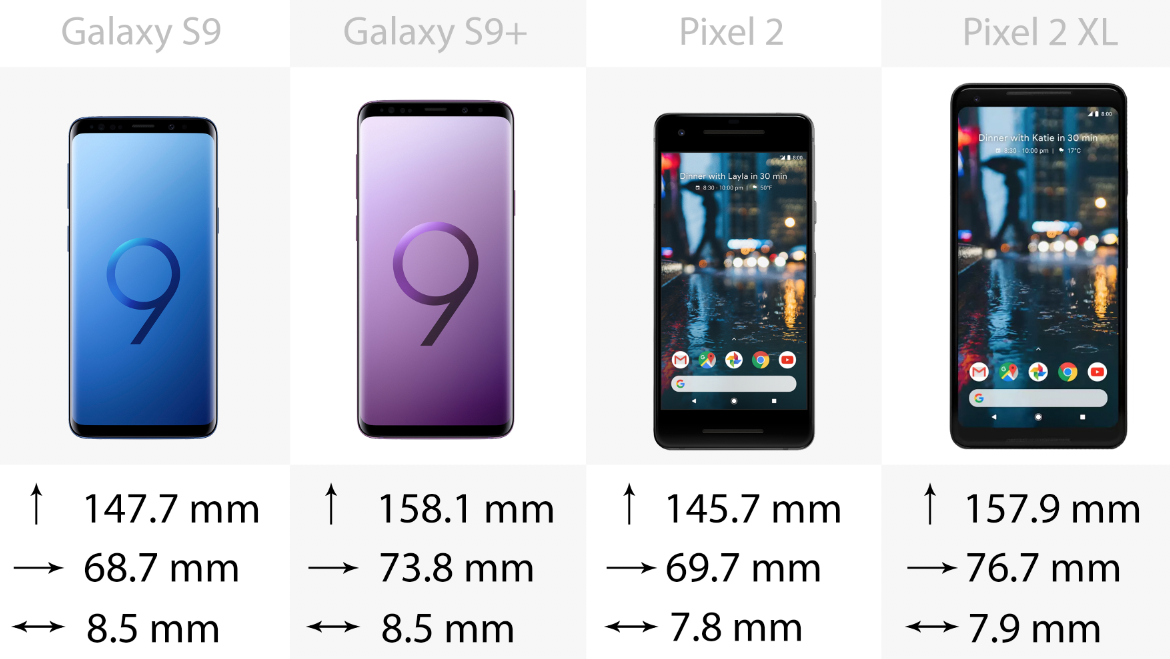
Both of Google's latest phones are slightly shorter and narrower than their Galactic counterparts. In the thickness department Samsung's devices have bulked up a bit since last year, making the Galaxy S9 and S9+ the chunkiest flagships of all the major companies.
Weight
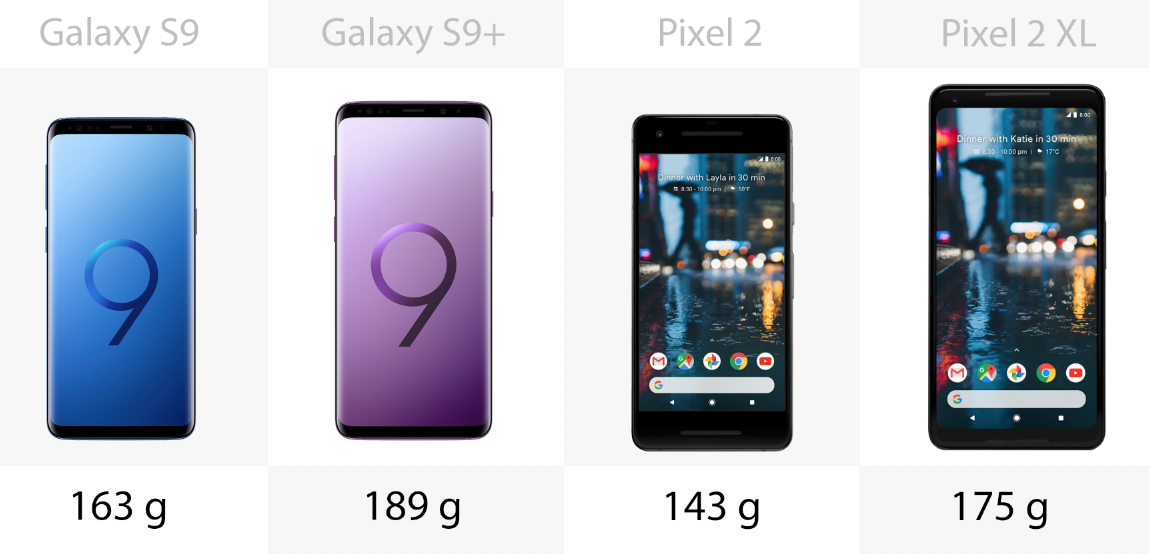
The Galaxy S9 and S9+ are also substantially heavier than the Pixels, to the equivalent of lugging around a bit of extra change.
Colors
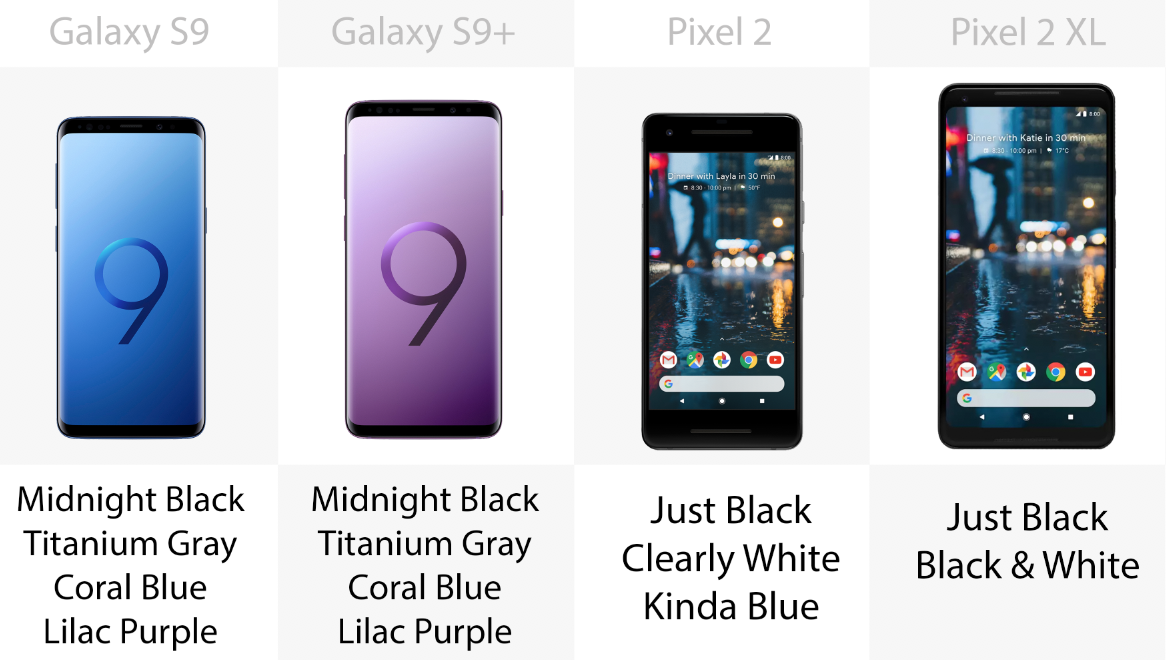
Black is the new… well, black, and comes standard on pretty much every phone nowadays. The Pixel 2 XL keeps it minimal with a black and white option, while the other phones spice things up with blue, gray and purple.
Build
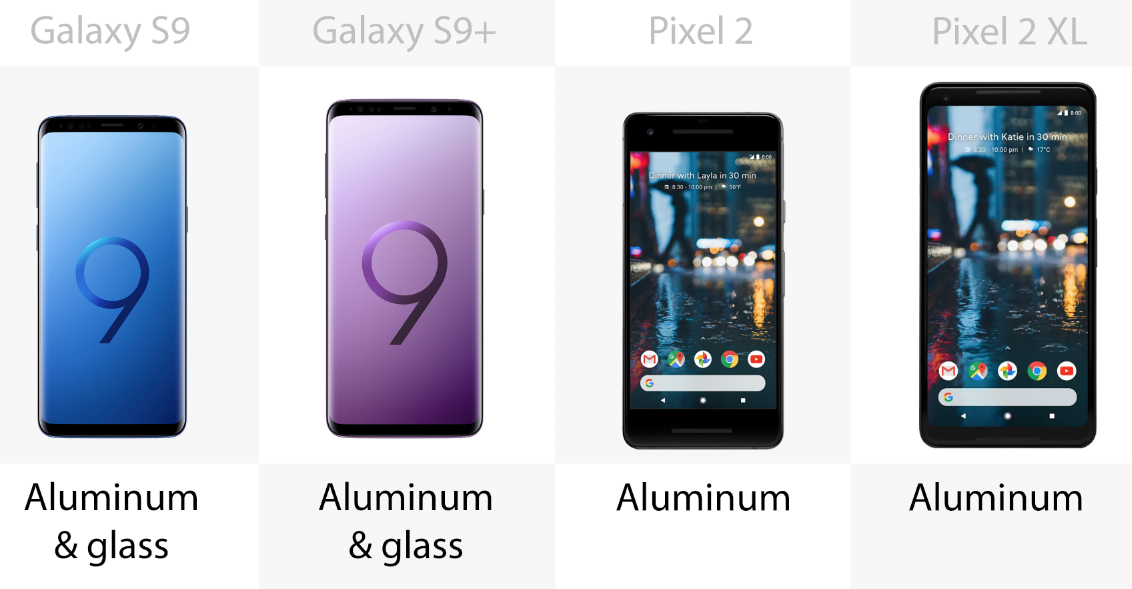
The Galaxy S9 line is made of glass front and back, ringed in aluminum. The Pixel 2 range is sticking with the aluminum backing, which is one less surface to crack should you drop it.
Water resistance
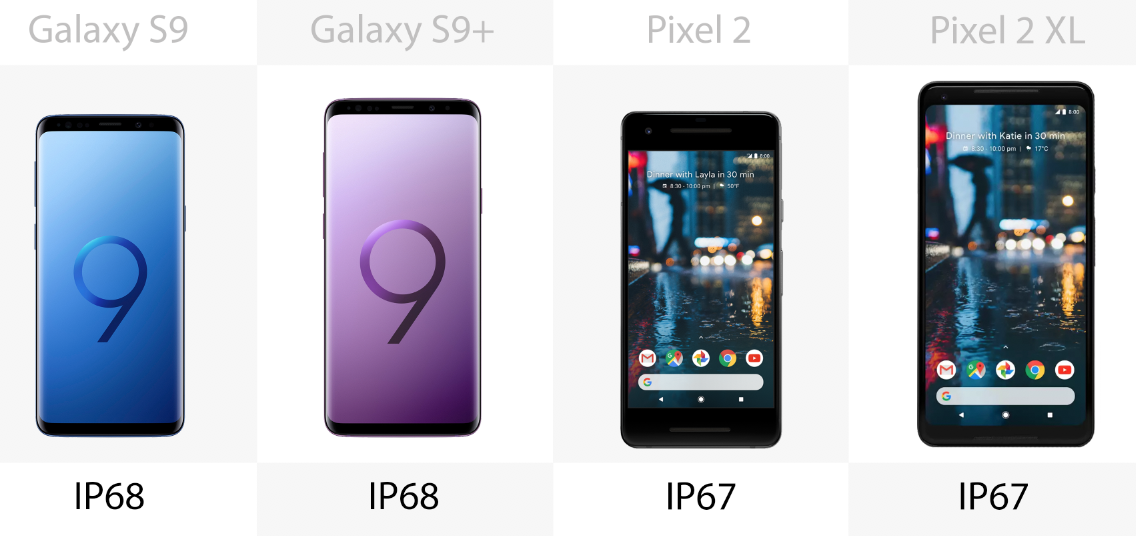
All four phones have decent water resistance. A rating of IP67 means that the Pixel 2 phones can be submerged in 1 m (3.3 ft) of water for up to 30 minutes, while IP68 extends that down to a depth of 1.5 m (4.9 ft). In effect, it's still not a good idea to take these swimming, but it's good to know that they'll bounce back if you forget to empty your pockets before diving in.
Display size
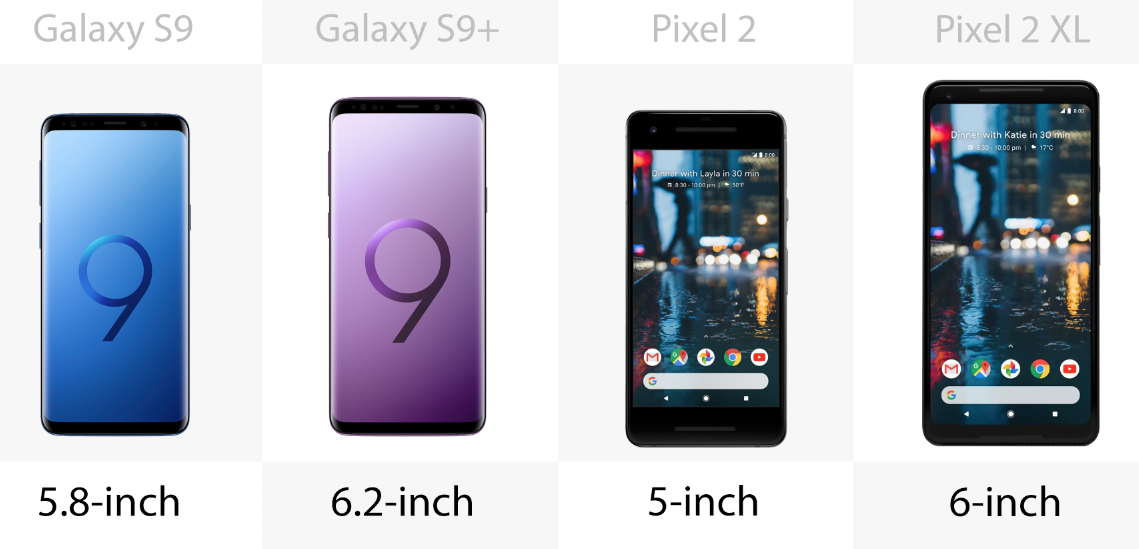
As the line between phone and phablet blur, the Pixel 2's screen is starting to look quite small indeed – and whether that's a good or a bad thing is really up to you. With the exception of the iPhone 8, at an adorable 4.7 inches, most other flagship screens are now hovering squarely around the 6-inch mark.
Screen-to-body ratio
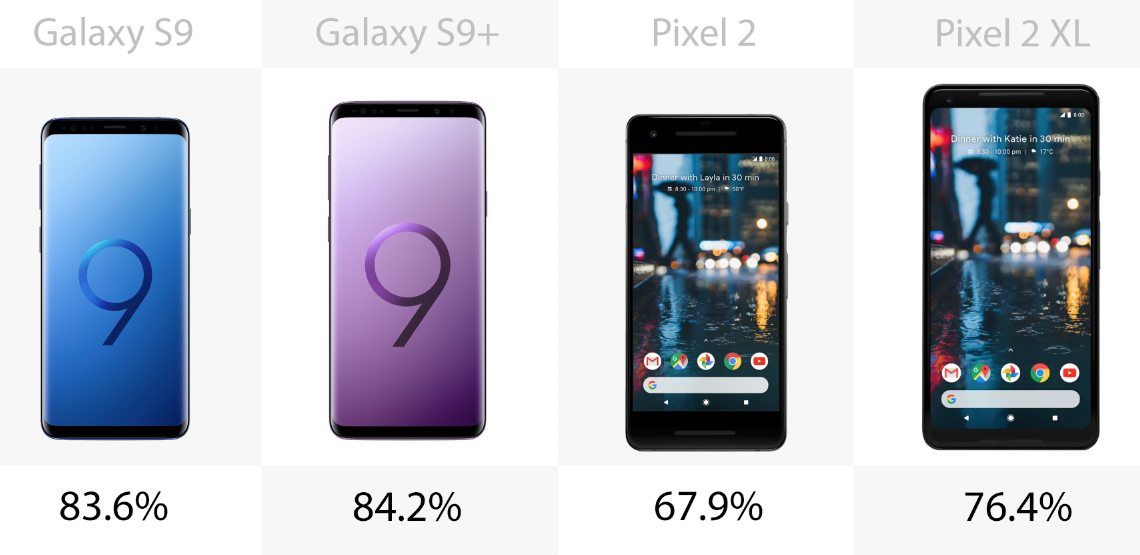
Bezels are increasingly uncool, with the major players all aiming to squeeze as much screen as possible onto the front of their phones. In that respect, the Pixel 2 is starting to look a little outdated. The Pixel 2 XL fares better, and the two Galaxy S9 models better again. Still, this is mostly an aesthetic preference.
Display resolution
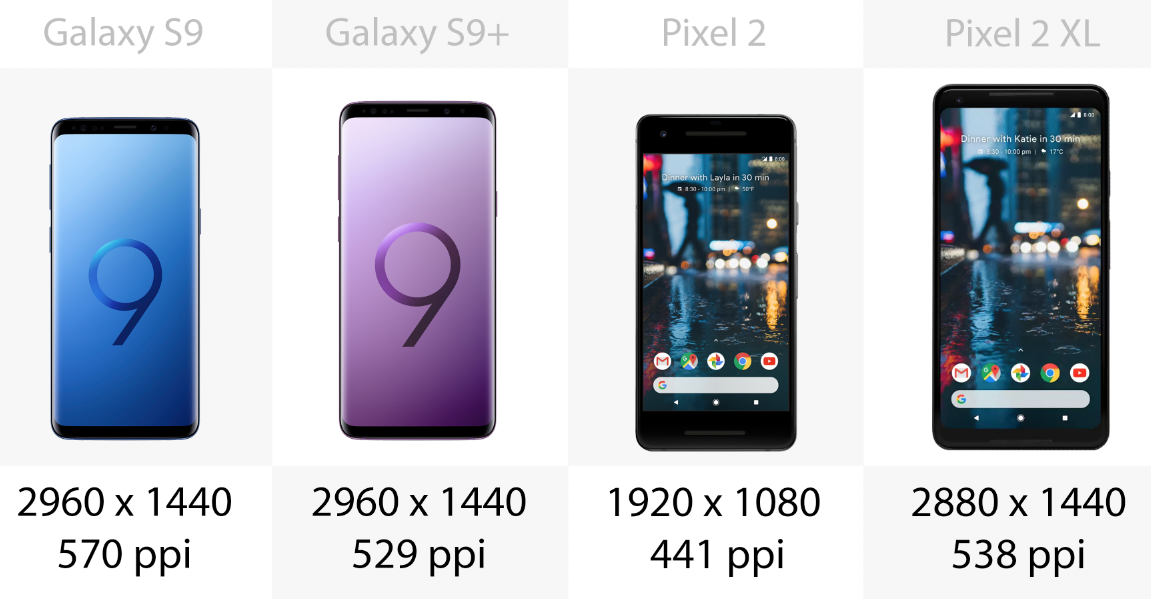
These phones all sport displays with roughly QHD resolution, with the exception of the Pixel 2, which gets by with a regular old HD screen.
Display type
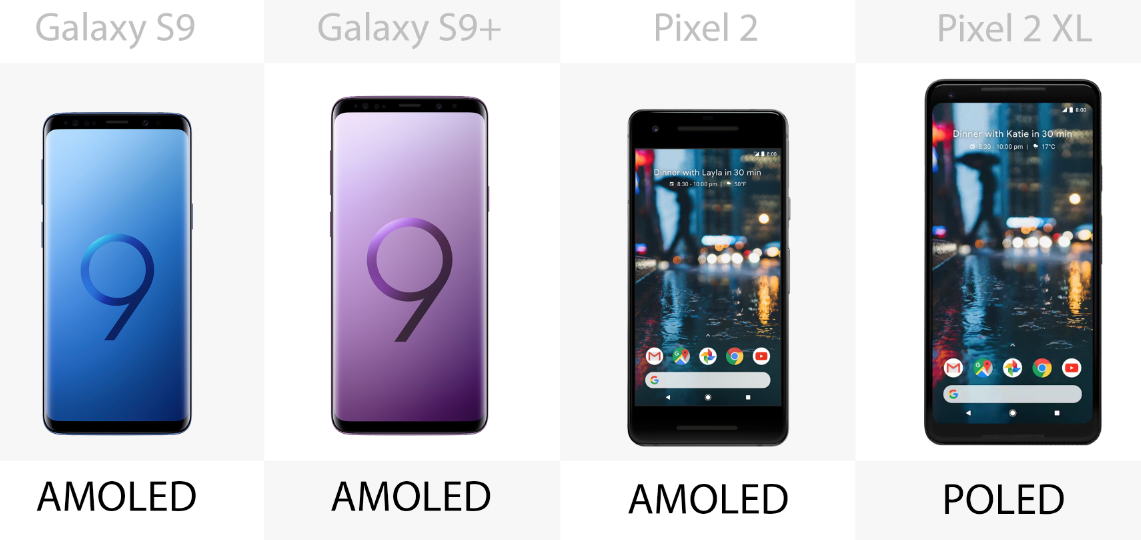
All four phones are built with organic light-emitting diode (OLED) displays. The Galaxy lineup and the Pixel 2 use Active Matrix OLED, while the Pixel 2 uses a Plastic OLED – basically the same thing but on a plastic substrate instead of glass, which gives it a thinner profile.
Biometrics

Fingerprints are all but the baseline for biometrics, with Google boasting that the Pixel 2 line has the fastest scanners in the West. Samsung has a few other tricks up its sleeve, letting users unlock the Galaxy phones with a scan of their face, eyes, or for added security, both at the same time.
Processor
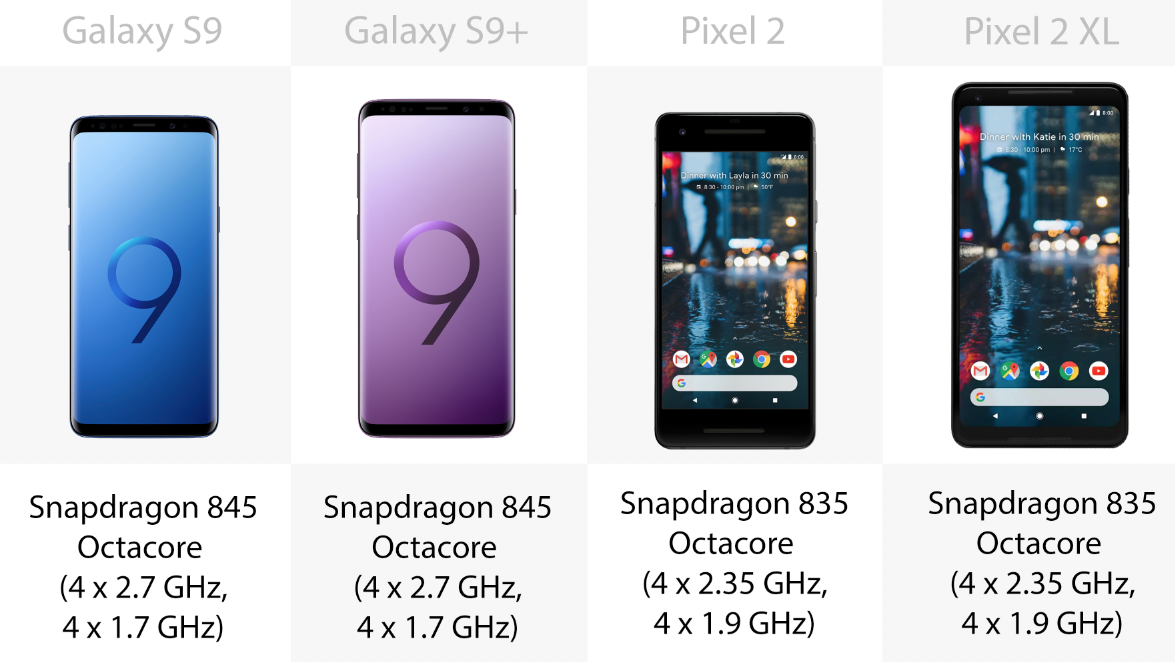
By virtue of being out of step with the release cycles of its competitors, the Galaxy S9 and S9+ are the first major phones to launch with Qualcomm's latest chipsets, the Snapdragon 845. The Google Pixel 2s are running last year's model – which is still no slouch.
RAM
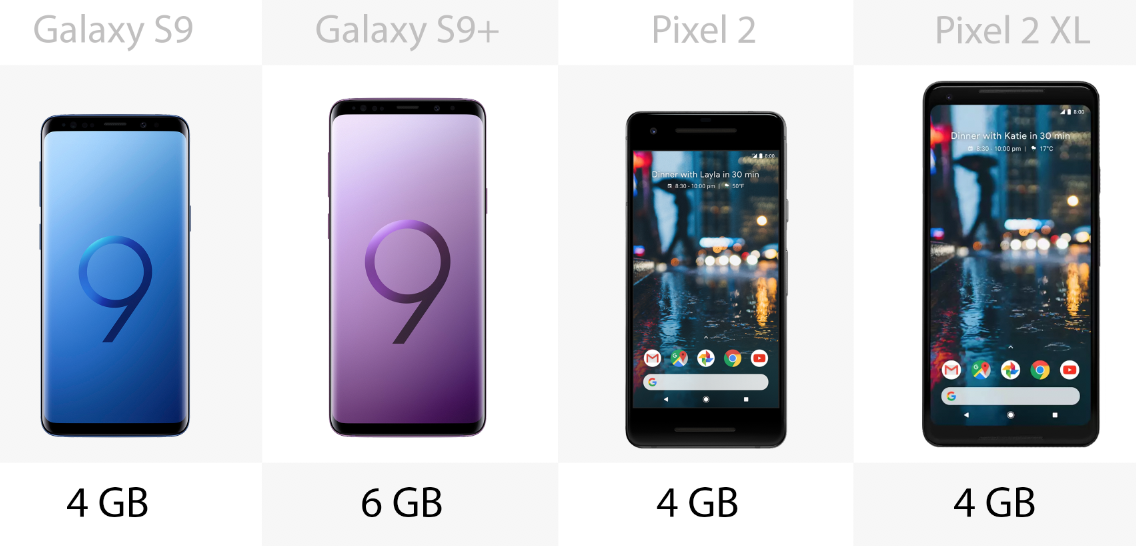
Flagships have all but settled on 4 GB as standard for RAM for now, but the Galaxy S9+ adds a little more grunt with 6 GB.
Onboard storage
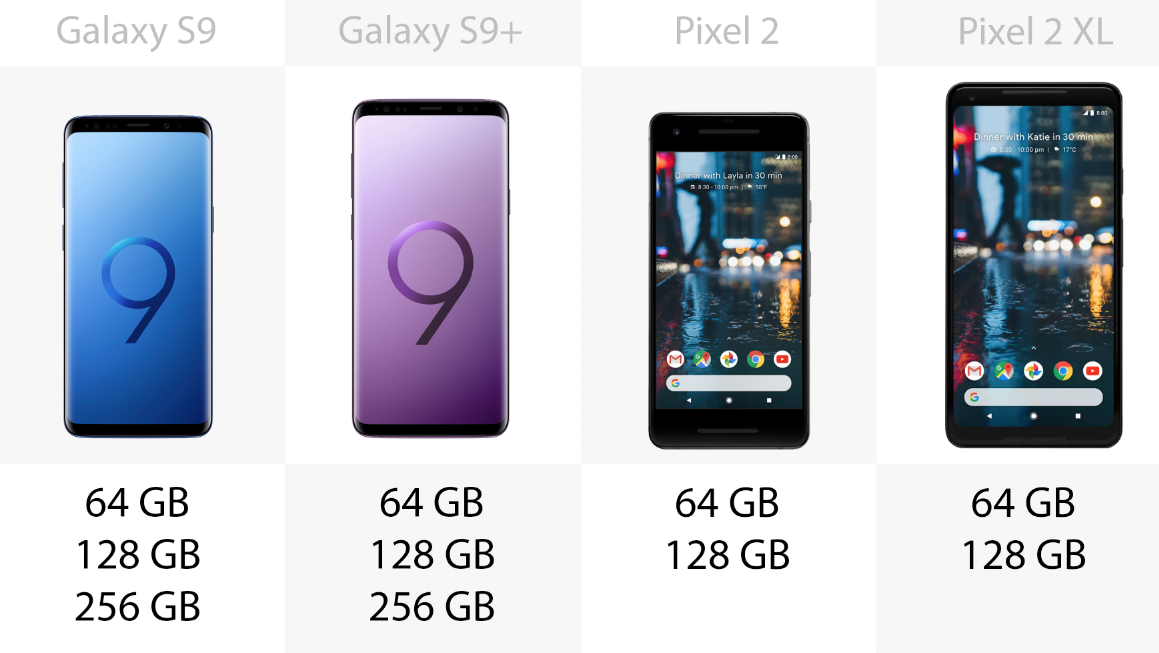
All four phones come with the option for 64 GB or 128 GB of built-in storage, while Samsung also offers a generous 256 GB for particularly heavy users.
MicroSD
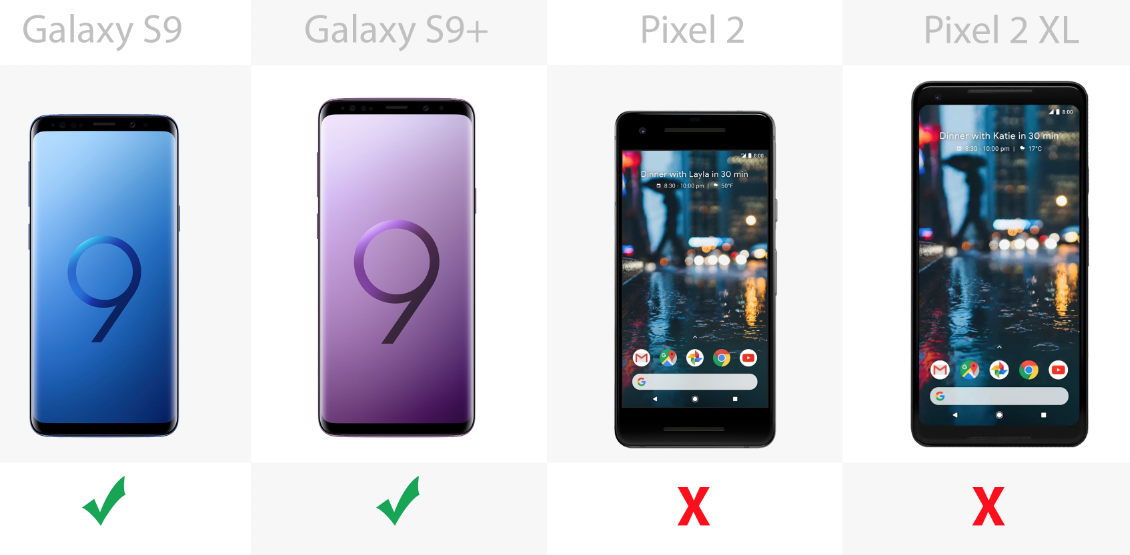
If you find yourself filling up your initial allowance of space, the Galaxy S9s can be expanded by way of the MicroSD card slot. If you're a Googler, choose your model carefully, because that's all you get.
Battery
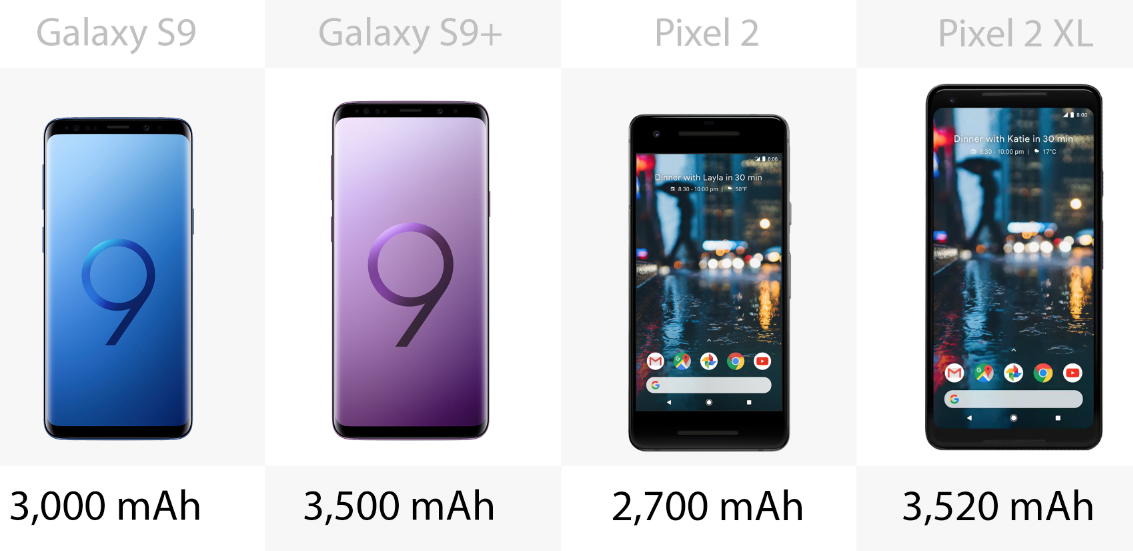
Google has both the lower and higher end of the battery spectrum here, with Samsung's phones slotting in between. In practical terms though, you're likely to get about a day's use out of each of these.
Ports
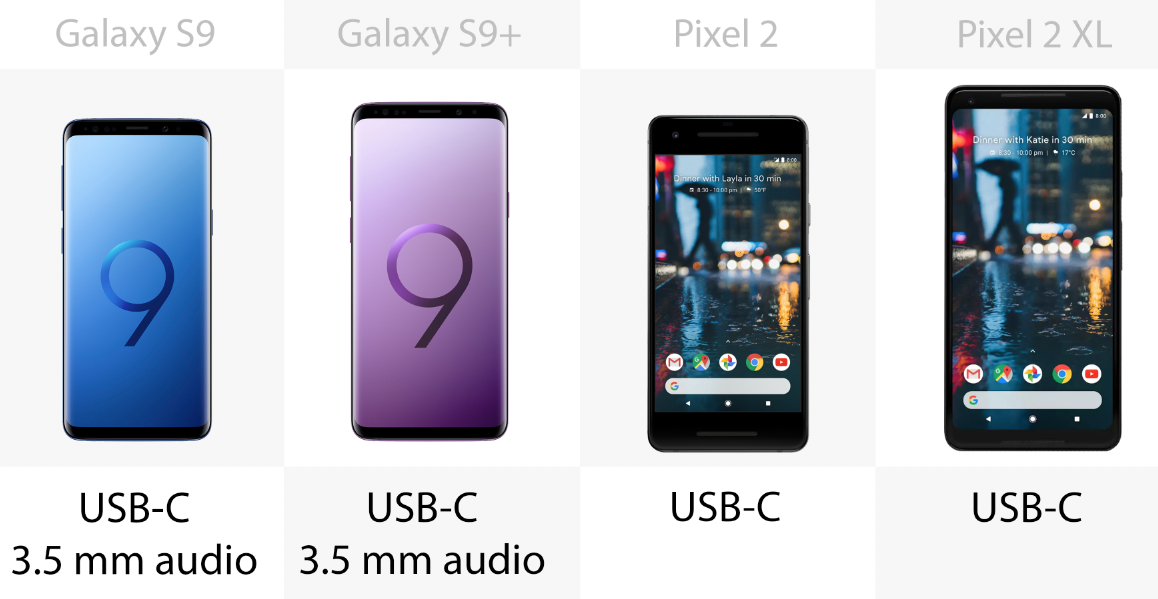
Ever since Apple sounded the death knell with the iPhone 7, the 3.5 mm headphone jack has been on the run, and Samsung's phones are where it's making its last stand. The Galaxy S9 and S9+ have a port built-in, but if you want to plug your buds into a Pixel 2 or 2 XL, you'll need to use the included adapter.
That said, if you've already made the switch to Bluetooth headphones, it probably won't matter much to you either way.
Fast charging
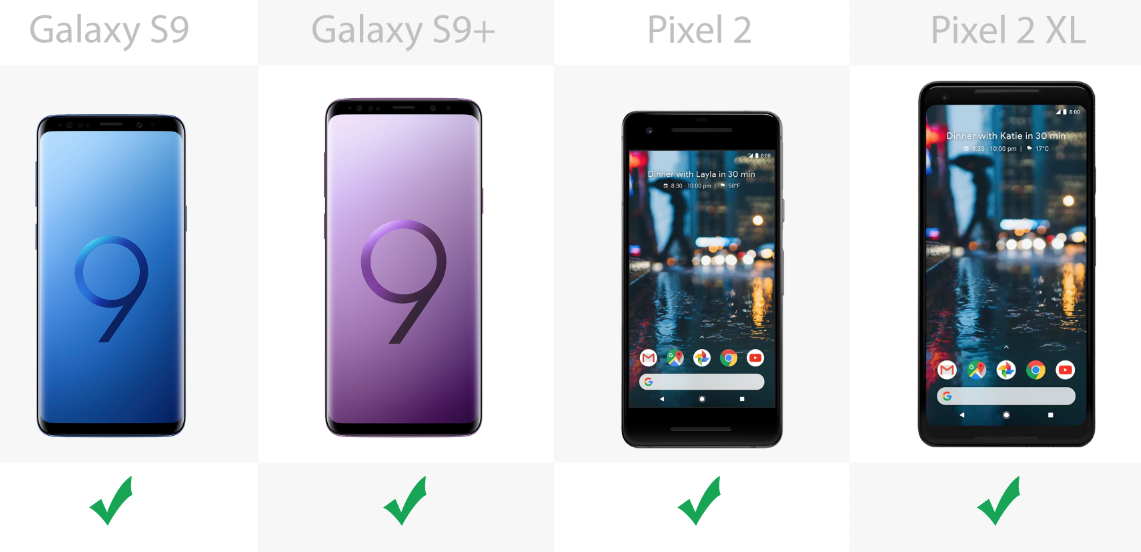
All four phones have the function for fast charging, right out of the box. Google brags that the Pixel 2 and 2 XL can provide up to seven hours of battery life with just a 15-minute charge.
Wireless charging

The metal backs of the Pixel phones means that they can't be wirelessly charged, but in the tech's current form that's no big loss. The Galaxy S9 and S9+ have the functionality, but it requires a separate accessory.
Front camera
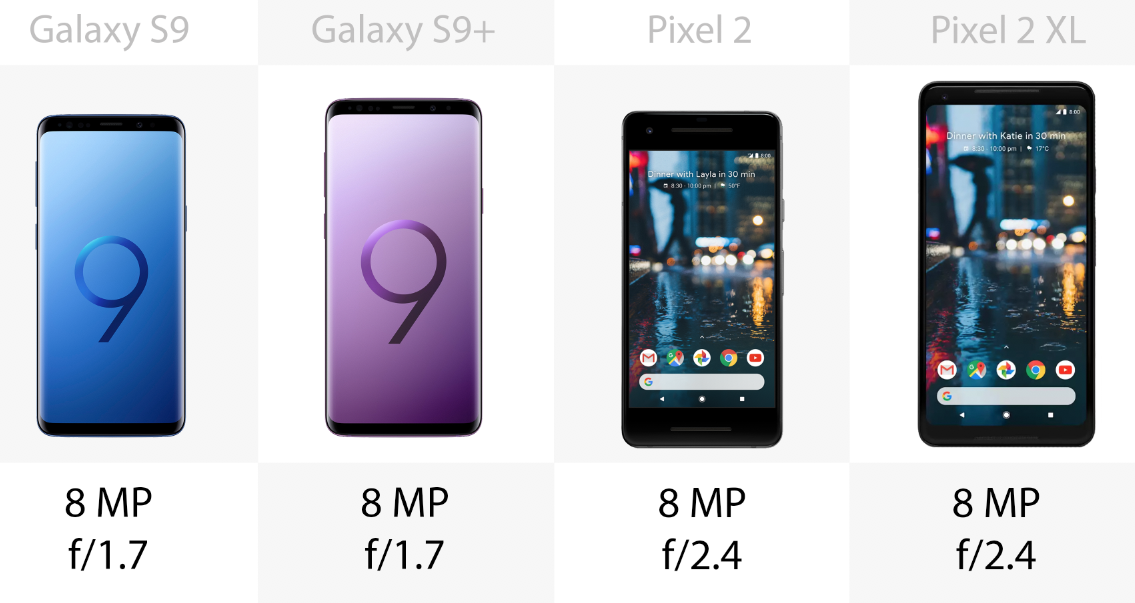
The selfie cams on all four phones have a resolution of eight megapixels, but the Galaxies have a wider aperture (represented by the lower f-number). That means those cameras should perform better in low-light conditions and allow for more of a bokeh effect, where the background blurs away to make the subject stand out more.
Main camera

While the cameras in the Pixels are nothing to scoff at, the Galaxy phones seem to have more powerful main cameras – unsurprising, since that's the area that Samsung sunk the most work into this generation. The base model S9 has a dual aperture that switches between f/2.4 for snaps in bright daylight, and f/1.5 for low-light shots, while the S9+ builds on that with a wide-angle lens and a telephoto lens.
Photo/video modes

Shooting slow motion at 240 frames per second is a common feature, but for the latest Galaxies Samsung cranked it up to Super slow-mo, allowing for 960 frames per second at 720p resolution.
Augmented reality, where virtual images are laid over real scenes, is becoming more common too. It's a tick to Google for this one: its AR Sticker system lets users slap animated characters over their photos and videos, with the phone's depth-sensing capabilities allowing them to interact with the real world. At the moment, the collections include cartoony people and foodstuffs, as well as characters from Star Wars and Stranger Things, but Google promises more are on the way.
Samsung's AR Emoji, on the other hand, are almost AR in name only. Rather than being placed over photos, they let you create cartoon versions of your face to send as GIFs or still images through certain messaging services.
Operating system

All four phones are running Android 8 Oreo straight out of the box.
Assistant
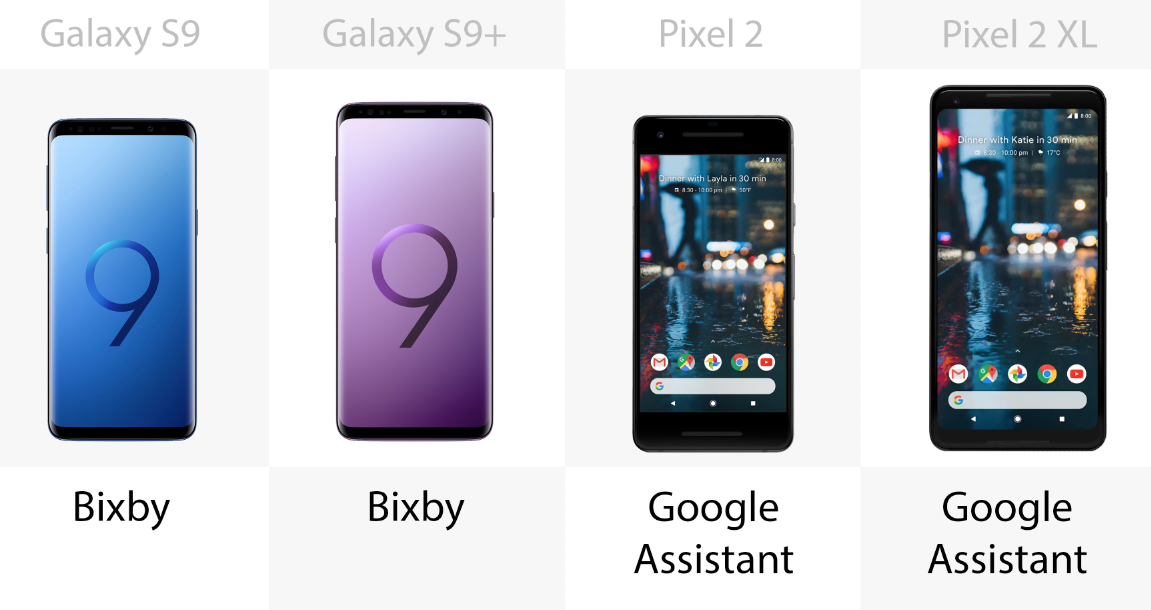
Both companies have packed in their own proprietary assistants. Along with the usual voice requests to set reminders or check the weather, Bixby can now translate signs and documents in real-time, while the Pixels can recognize landmarks, book covers or movie posters and bring up Google search info about them. Taking a page out of the HTC U11's book, the Google Assistant can be called up by giving the Pixel phones a little squeeze.
Mobile payments
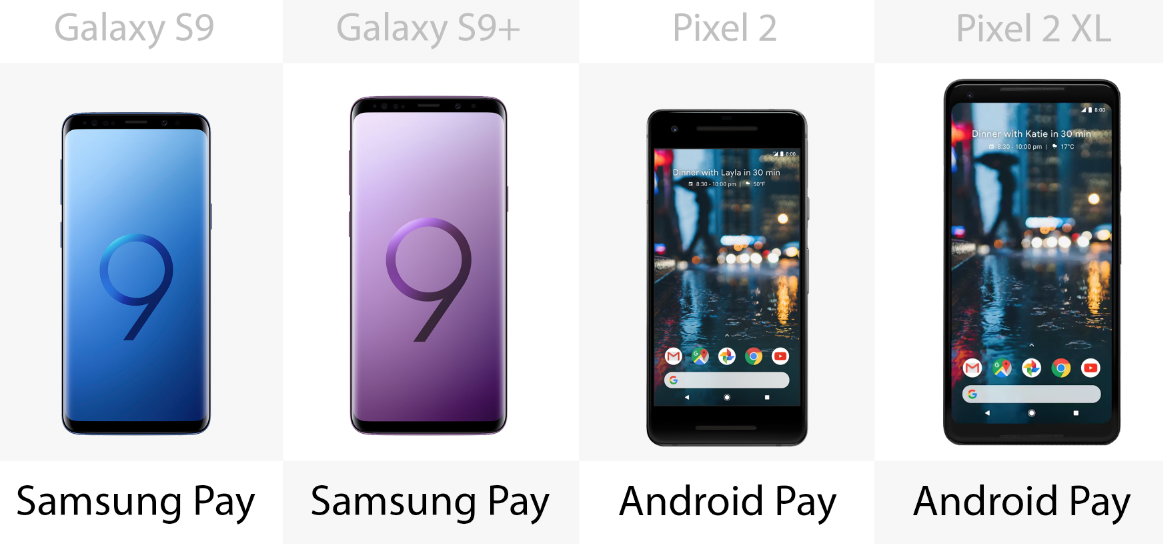
All four phones have a tap-to-pay function built in. The Galaxies use Samsung Pay, while the Pixels use Android Pay.
Release date
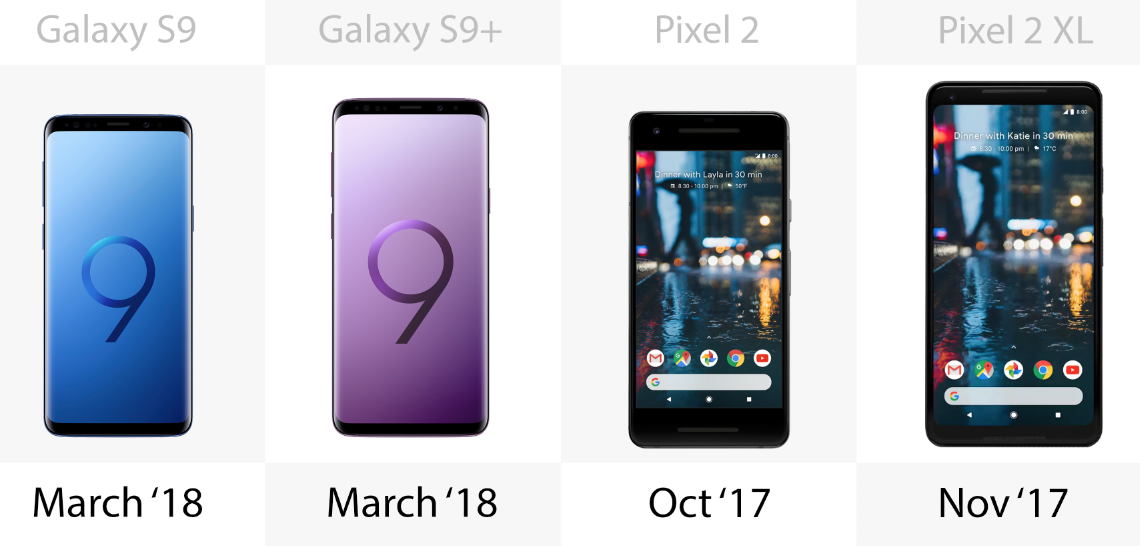
The Pixel 2 was first launched last October, with the 2 XL following the next month. Samsung has just released the Galaxy S9 and S9+ earlier in March.
Price
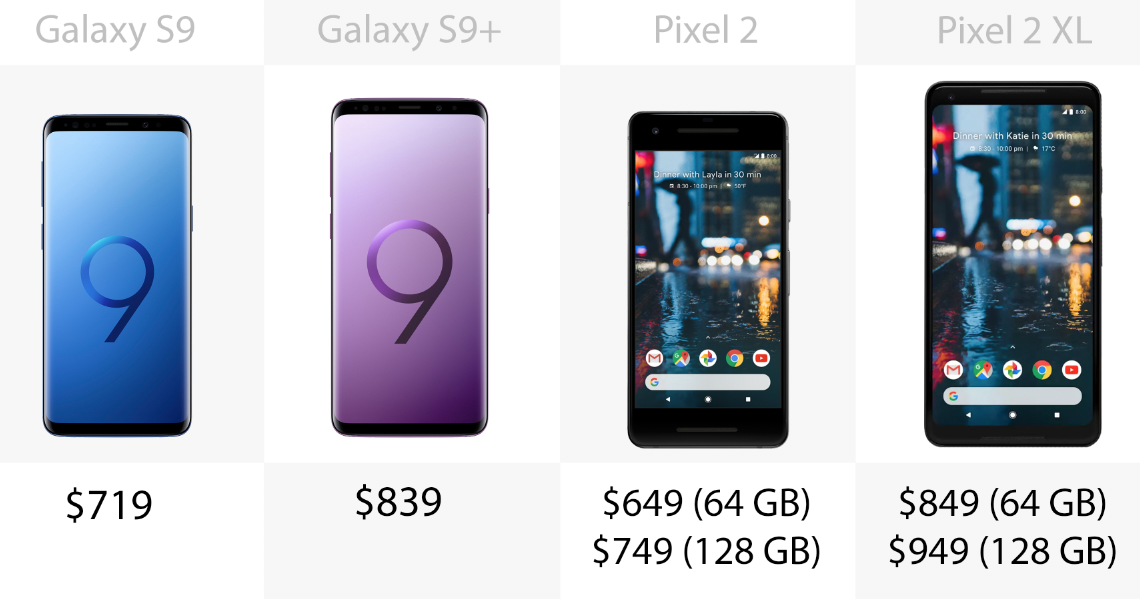
The Pixel 2 clocks in at the cheapest, at US$649 for the 64 GB model, but you can get a 128 GB Pixel 2 for just a hair more than the 64 GB Galaxy S9. The S9+ and the Pixel 2 XL have similar starting prices.


